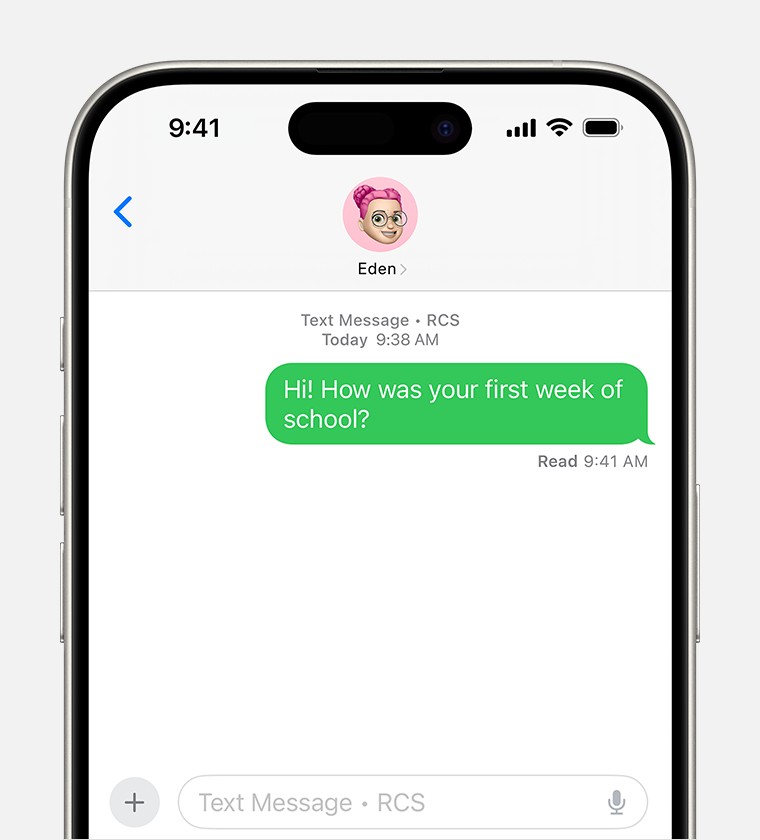Short Message Service, most commonly known as SMS, is a ubiquitous technology that allows you to send and receive text messages on mobile phones. While messaging apps and advanced protocols have emerged, SMS remains a fundamental and widely accessible communication method. This article delves into what SMS is, how it works, and its differences from newer messaging technologies like MMS, RCS, and iMessage.
SMS Explained: Definition, History, and Basics
SMS stands for Short Message Service. It’s a text messaging service component of phone, web, or mobile communication systems. SMS was initially conceived as part of GSM (Global System for Mobile communications) digital mobile phone standard, with the first SMS message sent in 1992. The beauty of SMS lies in its simplicity and broad compatibility. It works across virtually all mobile networks and phone types, making it a universal way to send short text-based messages.
SMS messages are limited in length, originally to 160 characters for GSM. This limitation encouraged concise communication and gave rise to the term “texting.” Although modern phones can concatenate messages to appear longer, the underlying technology still transmits messages in these short segments. SMS is primarily designed for text, with limited support for multimedia content.
How SMS Works: Technical Aspects and Limitations
SMS operates over the cellular network’s signaling channels, separate from voice channels. This allows for messages to be sent and received even while a voice call is in progress. When you send an SMS, your phone transmits the message to the nearest cell tower, which then routes it through the mobile network to the recipient’s carrier. The recipient’s carrier then delivers the message to their phone when it’s within network coverage.
SMS is a store-and-forward service, meaning messages are temporarily stored at a Short Message Service Center (SMSC) if the recipient’s phone is unavailable (e.g., turned off or out of coverage). The SMSC will attempt to deliver the message later when the phone becomes available.
While SMS is reliable for text, it has limitations:
- Character Limit: The 160-character limit (for GSM) can be restrictive, although concatenation helps with longer messages.
- Limited Multimedia Support: SMS is not designed for rich media. While MMS (Multimedia Messaging Service) addresses this, SMS itself is text-based.
- No End-to-End Encryption: Standard SMS messages are not end-to-end encrypted. This means the content of SMS messages could potentially be intercepted by third parties.
SMS vs. MMS and iMessage/RCS: Understanding the Differences
It’s important to differentiate SMS from other messaging types you might encounter on your smartphone:
- SMS vs. MMS (Multimedia Messaging Service): MMS is an extension of SMS that allows for sending multimedia content like photos, videos, and audio files, as well as longer text messages. MMS messages are also delivered via cellular networks but use different protocols that are better suited for larger data.
- SMS vs. iMessage: iMessage is Apple’s proprietary messaging service that works exclusively between Apple devices (iPhone, iPad, Mac, etc.). iMessage uses internet data (Wi-Fi or cellular data) instead of cellular networks for message transmission. It offers features not available in SMS, such as end-to-end encryption, read receipts, typing indicators, and richer media support. iMessages appear in blue bubbles, while SMS/MMS appear in green bubbles on iPhones.
- SMS vs. RCS (Rich Communication Services): RCS is a more modern messaging protocol intended to replace SMS. It offers features similar to iMessage, such as read receipts, typing indicators, high-resolution media sharing, and group chats, but it’s designed to be a carrier-based standard for Android and is now also supported by Apple in iOS 18. While RCS offers improvements over SMS, it is not end-to-end encrypted in its standard implementation and its availability depends on carrier support. RCS messages can also appear as green bubbles on iPhones.
Benefits and Uses of SMS
Despite the emergence of advanced messaging platforms, SMS remains relevant and beneficial for several reasons:
- Universality and Accessibility: SMS works on virtually every mobile phone, regardless of brand or operating system, and across all mobile networks. This makes it the most universally accessible messaging method.
- Reliability: SMS is a reliable communication channel, especially for critical alerts and notifications, as it is deeply integrated into cellular infrastructure.
- No Internet Dependency: Unlike iMessage or many RCS implementations, basic SMS functionality does not require an internet connection (though internet can enhance delivery in some cases). It operates directly over the cellular network.
- Business and Marketing Applications: SMS is widely used by businesses for marketing, alerts, notifications, two-factor authentication, and customer service due to its high open rates and direct reach.
Conclusion: The Enduring Role of SMS
In conclusion, SMS is a foundational technology for mobile communication that continues to play a vital role in personal and business interactions. While newer technologies offer richer features and functionalities, SMS’s universality, reliability, and simplicity ensure its continued relevance in the messaging landscape. Understanding what SMS is and how it differs from other messaging types provides valuable insight into the diverse world of mobile communication.
